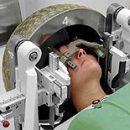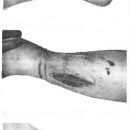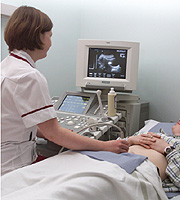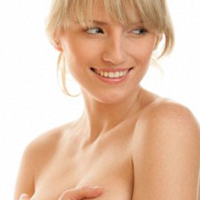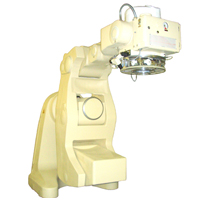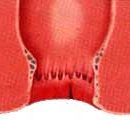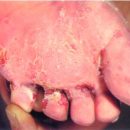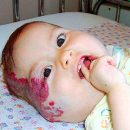The skin is the largest organism. It covers internal organs and protects them from damage, and also serves as a barrier between microorganisms and internal organs. Not everyone is subject to the same risk of melanoma. Are you at risk? Read in this article.
Content
What is a risk factor
Risk factor - this is what increases the likelihood of cancer. With different types of cancer, there are various risk factors. Smoking is a risk factor for lung cancer, oral cavity, larynx, bladder, kidneys and a number of other organs. However, the presence of risk factor and even several such factors does not mean that this person will have a disease.
The main risk factors for melanoma are the following:
Netures (Moles) relate to benign melanomotic tumors. Netures are usually absent at birth, but begin to appear in children and adolescents. Some types of nonsense predispose to the development of melanoma.
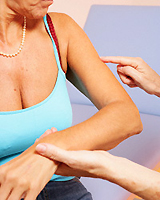 The presence of a dysplastic nevus, or atypical moles, increases the risk of melanoma. Dysplastic nevies are similar to ordinary moles, but can resemble melanoma. They can be located on the sun unprotected places, as well as on closed areas of the body, for example, on the buttocks or the scalp. These nevuses are usually more ordinary moles. Some people have dysplastic neutres can be multiple.
The presence of a dysplastic nevus, or atypical moles, increases the risk of melanoma. Dysplastic nevies are similar to ordinary moles, but can resemble melanoma. They can be located on the sun unprotected places, as well as on closed areas of the body, for example, on the buttocks or the scalp. These nevuses are usually more ordinary moles. Some people have dysplastic neutres can be multiple.
Displanic nevuses are often a family disease. If your family has relatives with a dysplastic nevus, then you have a 50% chance of developing such a disease. If you have one or more dyslastic nonsense, as well as, at least two close relatives who have undergone melanoma, the risk of developing melanoma increases by 50% and more. The risk of melanoma throughout life is 6-10% in patients with dysplastic Neva, depending on the age, family history, the number of dysplastic non-discovery and other factors.
Nedsplastic and unbredient nevies are very rarely turning into melanoma. However, people with multiple moles and major moles have a risk of melanoma.
White leather, freckles and blonde hair. The risk of melanoma is 20 times higher among white people compared to African Americans. This is due to the fact that the skin pigment has a protective effect. White people with red or blond hair, as well as with white leather, on which there are freckles and which quickly burns in the sun, the risk of developing melanoma is especially elevated. Blue eyes also raise the risk of melanoma. Any person, regardless of the color of the skin, may be melanoma, especially on the palms, feet, under the nails, in the oral cavity and in the internal organs.
Family history. The risk of melanoma is increased, if one or closer relatives (mother, father, brother, sister, child) suffered melanoma. Depending on the number of ill relatives, the risk can be increased to 8 times compared with people without family history. 10% of melanoma patients have a family history of this disease. 20-40% of families with a high frequency melanoma identified mutation of a gene responsible for the development of melanoma.
Immunosuppression. People who received preparations inhibiting the immune system, for example, when transplantation of organs, have an increased risk of melanoma.
Excessive impact of ultraviolet radiation and tanning. Dump source of ultraviolet radiation is sunlight. Ultraviolet lamps and cabins belong to other sources. People who receive excessive impact of light from these sources have an increased risk of skin cancer, including melanoma. The value of ultraviolet exposure depends on the intensity of light, exposure time, as well as the use of protective clothing and screen.
If you have heavy burns with bubbles, especially in kindergarten or adolescence, then you have a risk of melanoma. Short-term highly visible effects are more dangerous for the development of melanoma than low-alone repeated exposure, even if the total dose of ultraviolet radiation will be the same.
Age. Almost half of all Melan is detected from people over 50 years. However, Melanoma may occur in a younger age (20-30 years). In fact, Melanoma is one of the most frequent tumors in people younger than 30 years. Melanoma in people with family history develops in a younger age.
Floor. Men more often sick melanoma than women. The probability of the development of melanoma in a man throughout life is 1 to 57, and in women - 1 to 81.
Pigment Keroderma. Pigment Keroderma is a rare inherited disease resulting from an enzyme defect that restores damaged DNA. People suffering from a pigment kservoch have a high risk of both melanoma and non-melanomous malignant skin tumors. Since people with a pigment kservial less can restore DNA damage caused by sunlight, they can develop tumors in open areas of skin exposed to solar. These facts help to explain the relationship between sunlight and skin cancer.
Past history of melanoma. The patient suffered by Melanoma has an increased risk of new melanoma.
Causes of melanoma
DNA is a genetic material in our cells. It transmits genetic information to the next generation, making, for example, children like parents. In addition to information regarding the color of the hair, the features of the face and other aspects of the appearance, DNA also contains information for the body's cell on how to grow and how to perform the necessary activity.
 Ultraviolet radiation can damage DNA. In most melanomes there are disorders in chromosomes where DNA is located. This damage makes DNA less capable of controlling the growth and division of cells. In some situations, this leads to the beginning of cancer. Most of the ultraviolet radiation comes from sunlight, but some of the artificial sources, for example, ultraviolet cabins. Some such impacts may occur a few years before cancer. However, the tumor develops as a result of the impacts that took place many years ago. Children and young adults often receive many intense solaries that may not manifest themselves for many years and even decades.
Ultraviolet radiation can damage DNA. In most melanomes there are disorders in chromosomes where DNA is located. This damage makes DNA less capable of controlling the growth and division of cells. In some situations, this leads to the beginning of cancer. Most of the ultraviolet radiation comes from sunlight, but some of the artificial sources, for example, ultraviolet cabins. Some such impacts may occur a few years before cancer. However, the tumor develops as a result of the impacts that took place many years ago. Children and young adults often receive many intense solaries that may not manifest themselves for many years and even decades.
Currently, the study of the relationship between DNA and melanoma continues. It was found that DNA of some genes is often damaged in melanoma cells. Most of these DNA changes are not inherited, and they may be the result of the impact of sunlight. There are opinions that some people are able to restore damaged DNAs better than others and they have a smaller probability of melanoma. Realizing the causes of the DNA change leading to the occurrence of melanoma, it will be possible to use gene therapy to restore the resulting DNA damage.
In some melanomes, DNA changes can be inherited. Inheritance of some mutant genes from one of the parents can increase the risk of melanoma. Currently, research is underway to identify changed blood test genes.
Although most of the nevids (moles) never turn into melanoma, in some cases it happens. Some changes in benign non-drug cells can lead to transform them into melanomic cells. However, it is not exactly not known why some moles are becoming malignant and why the presence of multiple moles (non-love) or atypical moles increases the risk of melanoma.
Recommendations for the prevention of melanoma
The most important way to reduce the risk of melanoma is to reduce the time of stay under intense sunlight.
To do this, you can recommend the following:
Stay in the shadow. The easiest and most effective way to limit the impact of ultraviolet rays is the minimum stay outdoors under the influence of sun rays. This is especially important from 10 am to 4 o'clock in the afternoon, when the action of ultraviolet rays is most pronounced. Remember that the sun's rays can be reflected from water, clouds, sand, cement and snow.
Skin Protection With Clothing. You can protect most of the skin with clothes, for example, shirts with long sleeves and hats with wide fields. Dark-colored tight fabric usually provides the best skin defense.
Use protective creams. Use protective creams, especially in cases where sunlight is intense. Use creams even into cloudy and cloud days, because ultraviolet rays penetrate through the clouds and fog.
Sunscreen needs to be applied to unprotected areas of the skin for 20-30 minutes before entering the street so that the skin absorbed cream. Apply a thick layer on face, ears, hands, legs and neck. Remember that skin processing must be repeated every 2 hours. It is also recommended to handle lips.
Protective creams and funds do not apply so that you are in the sun for a longer time. These funds do not prevent melanoma, they only reduce the intensity of ultraviolet rays.
Wearing sunglasses. Sunglasses for 99-100% protect eyes and skin around them from exposure to ultraviolet rays.
Avoid other sources of ultraviolet radiation. The use of ultraviolet lamps is dangerous to health, since their light can damage the skin, so their application is not recommended. Such lamps increase the risk of melanoma.
Sun protection. Children deserve special attention, as they spend a lot of time outdoors and quickly burn in the sun. Older children should be aware of the danger of a long stay in the sun and the possibility of the occurrence of melanoma. In highland areas and in areas with active solar exposure, the use of protective agents by you and your children should become a habit.
Identification of changed moles (Nevids) and their removal. The presence of certain types of moles (Nevids) is accompanied by an increased risk of melanoma. Depending on the appearance of these moles, the doctor may recommend a thorough monitoring of them or removal when suspected malignant rebirth. Routine removal of multiple moles as melanoma prevention is not recommended. In the presence of multiple moles, regular observation of the dermatologist is recommended, as well as monthly self-examination. In case of finding an unusual mole or its change, it is necessary to urgently turn to a specialist.
Genetic counseling. If several members of your family had melanoma, if you had multiple melanoma or if you had Melanoma at a young age or dysplastic nevuses, you may have a mutation (change) of gene. In this regard, genetic counseling. In some families with a high frequency melanoma, a mutation of the CDKN2A gene was found.

